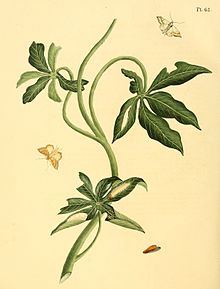Homophysodes is a genus of moths of the family Crambidae. It contains only one species, Homophysodes morbidalis, which is found from Guatemala south to Panama.
Promacrochilo is a genus of moths of the family Crambidae described by Stanisław Błeszyński in 1962. It contains only one species, Promacrochilo ambiguellus, described by Snellen in 1890, which is found in China (Hainan), India, Nepal, Myanmar, Thailand and Malaysia.
Cosmopterosis thetysalis is a moth in the family Crambidae. It was described by Francis Walker in 1859. It is found from southern Venezuela and north-western Brazil north to the coast of Suriname and French Guiana.
Eupoca bifascialis is a moth in the family Crambidae. It is found from southern Mexico to north-central Argentina.
Eupoca sanctalis is a moth in the family Crambidae. It is found from central Costa Rica south to northern Colombia.
Lipocosma albibasalis is a moth in the family Crambidae. It is found from Costa Rica to coastal Brazil.
Lipocosma nigripictalis is a moth in the family Crambidae. It is found from southern Mexico south to Brazil.
Lipocosma ausonialis is a moth in the family Crambidae. It was described by Herbert Druce in 1899. It is found from Guatemala to central Costa Rica.
Lipocosma calla is a moth in the family Crambidae. It was described by William James Kaye in 1901. It is found from southern Mexico south through Central America to northern South America.
Aureopteryx olufsoni is a moth in the family Crambidae described by Maria Alma Solis and David Adamski in 1998. It is found in the southern Atlantic and Pacific lowlands of Costa Rica.
Eupoca haakei is a moth in the family Crambidae. It was described by Maria Alma Solis and David Adamski in 1998. It is found at low elevations in south-eastern Costa Rica.
Parambia gnomosynalis is a moth in the family Crambidae. It was described by Harrison Gray Dyar Jr. in 1914. It is found from Guatemala south through Central America to northern South America.
Pseudoligostigma argyractalis is a moth in the family Crambidae described by William Schaus in 1912. It is found from western Guatemala to central Costa Rica.
Pseudoligostigma punctissimalis is a moth in the family Crambidae described by Harrison Gray Dyar Jr. in 1914. It is found from north-western Costa Rica to Panama and Trinidad.
Stegea hermalis is a moth in the family Crambidae. It was described by William Schaus in 1920. It is found from southern Mexico to Panama.
Glaphyria decisa is a moth in the family Crambidae. It was described by Francis Walker in 1866. It is found from Guatemala to south-eastern Paraguay. It is also found in Cuba.
Glaphyria rufescens is a moth in the family Crambidae. It was described by George Hampson in 1912. It is found from Costa Rica south to Panama.
Glaphyria spinacrista is a moth in the family Crambidae. It was described by Maria Alma Solis and David Adamski in 1998. It is found in north-western Costa Rica.
Glaphyria spinasingularis is a moth in the family Crambidae. It was described by Maria Alma Solis and David Adamski in 1998. It is found in north-western Costa Rica.
Glaphyria tetraspina is a moth in the family Crambidae. It was described by Maria Alma Solis and David Adamski in 1998. It is found in north-western Costa Rica.
